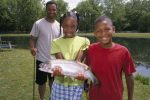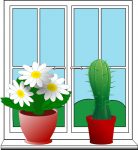 The last term of the school year – traditionally far too short and crowded with many events, both at and outside of school. OpenSTEM’s® Understanding Our World® program for HASS + Science ensures that not only are the students kept engaged with interesting material, but that teachers can relax, knowing that all curriculum-relevant material is covered by the middle of the term, ensuring enough time for marking and preparation of reports. Furthermore, following the OpenSTEM® Understanding Our World® program across an entire year guarantees that your students have met the curriculum requirements for all of History, Geography, Civics and Citizenship, Economics and Business (HASS) and Science for the whole year, matched to their year-level, even in multi-year level classes. This term our youngest students are reviewing some of the material covered earlier in the year and then preparing for a Play (with props and dress-ups) matched to this material. Students in Years 1 to 3 examine modern families around the world and then prepare a short presentation or dramatisation based on what they have learned. Older students are studying migrants and cultural identity and using the information to plan an end-of-year celebration of cultural diversity. These students also hold a class election, with preferential voting.
The last term of the school year – traditionally far too short and crowded with many events, both at and outside of school. OpenSTEM’s® Understanding Our World® program for HASS + Science ensures that not only are the students kept engaged with interesting material, but that teachers can relax, knowing that all curriculum-relevant material is covered by the middle of the term, ensuring enough time for marking and preparation of reports. Furthermore, following the OpenSTEM® Understanding Our World® program across an entire year guarantees that your students have met the curriculum requirements for all of History, Geography, Civics and Citizenship, Economics and Business (HASS) and Science for the whole year, matched to their year-level, even in multi-year level classes. This term our youngest students are reviewing some of the material covered earlier in the year and then preparing for a Play (with props and dress-ups) matched to this material. Students in Years 1 to 3 examine modern families around the world and then prepare a short presentation or dramatisation based on what they have learned. Older students are studying migrants and cultural identity and using the information to plan an end-of-year celebration of cultural diversity. These students also hold a class election, with preferential voting.
Foundation/Prep/Kindy to Year 3
 Our youngest students – those in Foundation/Prep/Kindy (Unit F.4) and combined classes with Year 1 (Unit F-1.4) are start the term by reviewing Celebrations (this is a great time to grab that Class Calendar and look ahead to Christmas!). They then examine how people celebrated these occasions in the past. Students in Years 1 (Unit 1.4), 2 (Unit 2.4) and 3 (Unit 3.4) start looking at Modern Families Around the World. This resource includes stories about families in Australia, Brazil, Canada, Denmark, Japan, Saudi Arabia and Somalia. Teachers can choose from these stories to tailor the unit to the class’s needs and interests. Students are encouraged to consider family and community structures around the world and compare them to their own.
Our youngest students – those in Foundation/Prep/Kindy (Unit F.4) and combined classes with Year 1 (Unit F-1.4) are start the term by reviewing Celebrations (this is a great time to grab that Class Calendar and look ahead to Christmas!). They then examine how people celebrated these occasions in the past. Students in Years 1 (Unit 1.4), 2 (Unit 2.4) and 3 (Unit 3.4) start looking at Modern Families Around the World. This resource includes stories about families in Australia, Brazil, Canada, Denmark, Japan, Saudi Arabia and Somalia. Teachers can choose from these stories to tailor the unit to the class’s needs and interests. Students are encouraged to consider family and community structures around the world and compare them to their own.
Years 3 to 6
 Students in Years 3 (Unit 3.8), 4 (Unit 4.4), 5 (Unit 5.4) and 6 (Unit 6.4) start the year by examining their own Ancestry, prior to looking at Migration and Diversity. Students interact with the OpenSTEM® “Our World” map, in order to gain an understanding of the wide range of places around the world in which Australians have their ancestry. Students in Year 3 will be focusing on diversity in Australian society over the next few weeks and will choose a group of migrants to study in more detail. Resources on several migrant groups are available to complement this unit. Students in Year 4 will focus on Australia’s connections to other parts of the world through time and will study either a group of Aboriginal people, or members of other groups with whom Aboriginal people had early contact, such as Macassan traders, or Europeans. Students in Year 5 will focus on migrants from European countries, such as the Irish, Greek or Italian communities. Students in Year 6 will focus on migrants from Asian countries, such as the Chinese or Vietnamese communities.
Students in Years 3 (Unit 3.8), 4 (Unit 4.4), 5 (Unit 5.4) and 6 (Unit 6.4) start the year by examining their own Ancestry, prior to looking at Migration and Diversity. Students interact with the OpenSTEM® “Our World” map, in order to gain an understanding of the wide range of places around the world in which Australians have their ancestry. Students in Year 3 will be focusing on diversity in Australian society over the next few weeks and will choose a group of migrants to study in more detail. Resources on several migrant groups are available to complement this unit. Students in Year 4 will focus on Australia’s connections to other parts of the world through time and will study either a group of Aboriginal people, or members of other groups with whom Aboriginal people had early contact, such as Macassan traders, or Europeans. Students in Year 5 will focus on migrants from European countries, such as the Irish, Greek or Italian communities. Students in Year 6 will focus on migrants from Asian countries, such as the Chinese or Vietnamese communities.
Students in Years 3 to 6 will also grow a plant from a seed, as a Science experiment, linked to their HASS studies. Students have the option to choose a plant brought to Australia by the migrant group or other community which they are studying. They will investigate when this plant arrived in Australia, from where it came, what conditions it needs to thrive and what cultural importance it has for the group. The linking of these areas of focus helps add additional relevance and immediacy to the curriculum material for students.


The material is much more interesting. When I discussed a topic later in the term, I found that the students…
Laura Davidson, Teacher